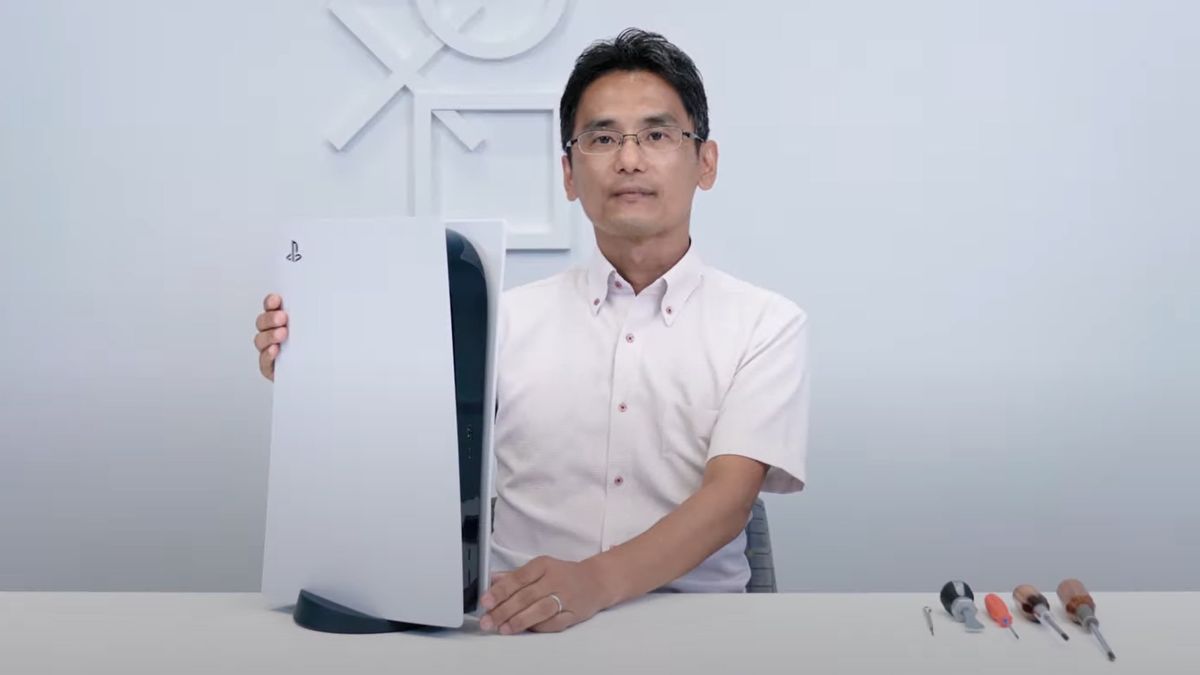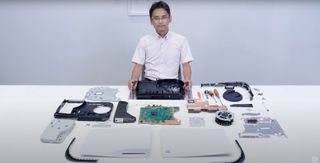PS5 teardown gives us our best look at Sony's console: Watch it here
Get a first look at the PS5's guts

The first batch of PS5 consoles given to Japanese news outlets and YouTubers gave us high-res images and long-awaited first impressions of the next-gen console. Now a 7-minute teardown video posted by Sony provides our best look at the PS5 yet.
The clip features Yasuhiro Ootori, the head of Sony's mechanical design, who guides us through the teardown in Japanese. He starts with the literal elephant in the room: the size of the PS5. After admitting that it's larger than the PS4, Ootori assures the size of the new console allows it to perform at high levels while remaining cool and quiet.
- PS5: Specs, price, release date and how it compares to gaming laptops
- PS5 vs. PS5 Digital Edition — Which one should you buy?
- PS5 pre-order stock alerts: Updates at Amazon, GameStop, Target and Best Buy
Next, we get a close-up look at the USB-C and USB-A ports on the front of the console. These will be used to charge the controller or connect to other accessories. On the rear of the console are two additional USB-A ports, an HDMI input, an Ethernet port, and the power input.
Turning back to the front of the PS5, Ootori highlights the practically invisible air vents between the center black piece and the two white panels. More hot air is pushed out through a large exhaust on the back of the device.
The video also shows us how the base works. Allowing you to position the console horizontally or vertically, the circular base has a single screw in the center that can be removed to change orientations. It's a simple process that requires a flat-heat screwdriver. The screw can even be stored in the base and a small black cap fills the hole it left in the console. Our first glimpse of the console on its side reveals its massive size; getting this box into an entertainment system could be tricky.

Perhaps the most interesting part of the video is when Ootori removes the side panels from the console by lifting the opposite corners and sliding them off. Why does it matter that you can remove the panels? Sony already says the PS5 is the most customizable console yet, which suggests you can replace the stock white panels for custom or limited edition ones.
Removing the white panels reveals a large cooling fan and two vents where dust is vacuumed into two holes. At this point, you can access the expandable m.2 storage slot by removing a metal cover.
Stay in the know with Laptop Mag
Get our in-depth reviews, helpful tips, great deals, and the biggest news stories delivered to your inbox.
The rest of the video shows Ootori tearing down the PS5 into its individual parts. It gives us a good idea of how user-serviceable the console is in case repairs are needed. From what we can tell, the entire console can be taken apart with a few screwdrivers without needing a heat source or even much elbow grease.
We recommend watching the full video because you get glimpses of the components powering the PS5, including its AMD Ryzen Zen 2 GPU, 16GB of GDDR6 system memory, the endlessly hyped 825GB SSD, and a liquid metal cooling system. Ootori also pulls out a massive heatsink he claims achieves the same cooling performance as a vapor chamber.
As a reminder, the PS5 goes on sale on November 12 in the US, UK, Canada and Japan. The standard edition costs $499 while the PS5 Digital Edition goes for $399. Console pre-orders began a few weeks ago and sold out immediately. However, more console could be made available between now and launch day so keep tabs on our PS5 pre-order page for the latest updates.
Phillip Tracy is the assistant managing editor at Laptop Mag where he reviews laptops, phones and other gadgets while covering the latest industry news. After graduating with a journalism degree from the University of Texas at Austin, Phillip became a tech reporter at the Daily Dot. There, he wrote reviews for a range of gadgets and covered everything from social media trends to cybersecurity. Prior to that, he wrote for RCR Wireless News covering 5G and IoT. When he's not tinkering with devices, you can find Phillip playing video games, reading, traveling or watching soccer.
